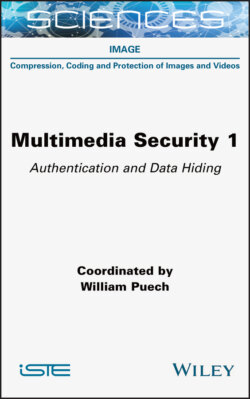Читать книгу Multimedia Security, Volume 1 - William Puech - Страница 23
1.2.4. JPEG compression
ОглавлениеThe stages of the JPEG compression algorithm, illustrated in Figure 1.4, are detailed below. The first stage of the JPEG encoding process consists of performing a color space transformation from RGB to YCBCR, where Y is the luminance component and CB and CR are the chrominance components of the blue difference and the red difference. Since the Human Visual System (HVS) is less sensitive to color changes than to changes in luminance, color components can be subsampled without affecting visual perception too much. The subsampling ratio generally applied is 4:2:0, which means that the horizontal and vertical resolution is reduced by a factor of 2. After the color subsampling, each channel is divided into blocks of 8 × 8 and each block is processed independently. The discrete cosine transform (DCT) is applied to each block and the coefficients are quantized.
The JPEG quality factor Q, ranging between 1 and 100, corresponds to the rate of image compression. The lower this rate, the lighter the resulting file, but the more deteriorated the image. A quantization matrix linked to Q provides a factor for each component of the DCT blocks. It is during this quantization step that the greatest loss of information occurs, but it is also this step that allows the most space in memory to be saved. The coefficients corresponding to the high frequencies, whose variations the HVS struggles to distinguish, are the most quantized, sometimes going so far as to be entirely canceled.
Finally, as in the example in Figure 1.5, the quantized blocks are encoded without loss to obtain a JPEG file. Each 8 × 8 block is zig-zagged and the coefficients are arranged as a vector in which the first components represent the low frequencies and the last ones represent the high frequencies.
Lossless compression by RLE coding (range coding) then exploits the long series of zeros at the end of each vector due to the strong quantization of the high frequencies, and then a Huffman code allows for a final lossless compression of the data, to which a header is finally added to form the file.
